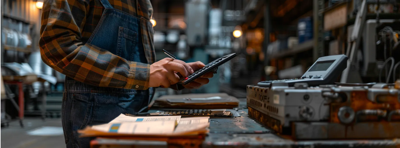
For many companies, investing in industrial equipment represents a significant expense. Purchasing quality used industrial equipment can offer a plethora of benefits, from reduced costs to faster delivery times. However, business owners and purchasing managers must approach the second-hand market with care and due diligence to ensure the best results. Below, we delve into the main advantages and strategies for investing in used industrial machinery, ensuring that your company maximizes its investment and maintains operational efficiency.
Tips for Choosing Reliable Used Industrial Equipment Suppliers
Finding a reputable seller is imperative when purchasing used industrial equipment. Established sellers with a good track record will likely offer more reliable machinery and will be more forthcoming about the status of their inventory. Asking for references or seeking reviews from previous customers can provide insight. valuable about the reliability of a supplier.
It is also useful to look for suppliers specialized in the specific type of machinery you need. A supplier specialized in a specific market will be better informed and may even offer after-sales support and replacement parts. Genemco is an example of a seller specialized in used industrial refrigeration equipment, a crucial element for companies looking for such specific machinery.
Whenever possible, ask to inspect the equipment in person or through a virtual visit. This inspection will allow you to evaluate the condition of the machine and speak directly with the people who have operated it. Open communication with the seller can also reveal the history of the equipment, its use, and any previous repairs or modifications.
Evaluate Long-Term Value Versus Costs of New Equipment
One of the main concerns when purchasing used industrial equipment is evaluating its long-term value versus the initial savings. It is important to consider the expected lifespan of the machine, potential repair costs and how technological advances may affect its efficiency and relevance in the future. This evaluation will help determine if the initial savings will translate into long-term value.
It is also crucial to budget for maintenance and possible part replacements, as these costs can add up over time. Some used equipment may require more frequent maintenance, which should be taken into account in the total cost of ownership (TCO). Budgeting for these expenses will help maintain team performance without unexpected financial strain.
Instead, new equipment often comes with warranties and the latest technology, which can lengthen intervals between repairs and improve production efficiency. However, high initial costs can be prohibitive and depreciation is much higher during the first few years of ownership. This underscores the importance of balancing immediate needs with long-term planning.
How to Evaluate the Condition and Performance of Secondhand Machinery
When evaluating used machinery, a meticulous assessment of its condition is essential. This examination involves checking for signs of wear, such as rust, cracks, or excessive noise during operation. It is indicative of how well the machinery has been maintained.
Performance testing is another crucial step in the evaluation process. If possible, observe the machine in operation to ensure that it performs as expected under working conditions. Performance testing can reveal potential problems that may not be evident when the machine is stopped.
When evaluating machinery, consider the availability of spare parts. Discontinued models or models with scarce parts can pose significant long-term problems and expenses. It is advisable to select equipment for which parts are readily available and cost effective.
Maximize Return on Investment (ROI) When Purchasing Used Industrial Equipment
To maximize the ROI When purchasing used industrial equipment, you must start by knowing your production needs well. Aligning these needs with the team's capabilities ensures that the purchase will sufficiently contribute to operational objectives. This step is crucial to avoid underusing a machine or pushing it beyond its limits, which can negatively impact ROI.
Once equipment is purchased, it is essential to take a proactive approach to maintenance. Regular checks and timely repairs can dramatically extend the life of machinery and avoid costly downtime. Setting aside a maintenance fund as part of the initial investment can protect against future financial problems.
Overall, purchasing quality used industrial equipment is a smart business strategy that comes with notable economic benefits and environmental considerations. Proper assessment and maintenance, along with partnering with trusted suppliers, can result in significant cost savings without compromising productivity or efficiency. Overall, used machinery is an excellent alternative for companies seeking a balance between cost and quality, as long as the purchasing process includes due diligence.


(0) comments
We welcome your comments
Log In
Post a comment as Guest
Keep it Clean. Please avoid obscene, vulgar, lewd, racist or sexually-oriented language.
PLEASE TURN OFF YOUR CAPS LOCK.
Don't Threaten. Threats of harming another person will not be tolerated.
Be Truthful. Don't knowingly lie about anyone or anything.
Be Nice. No racism, sexism or any sort of -ism that is degrading to another person.
Be Proactive. Use the 'Report' link on each comment to let us know of abusive posts.
Share with Us. We'd love to hear eyewitness accounts, the history behind an article.